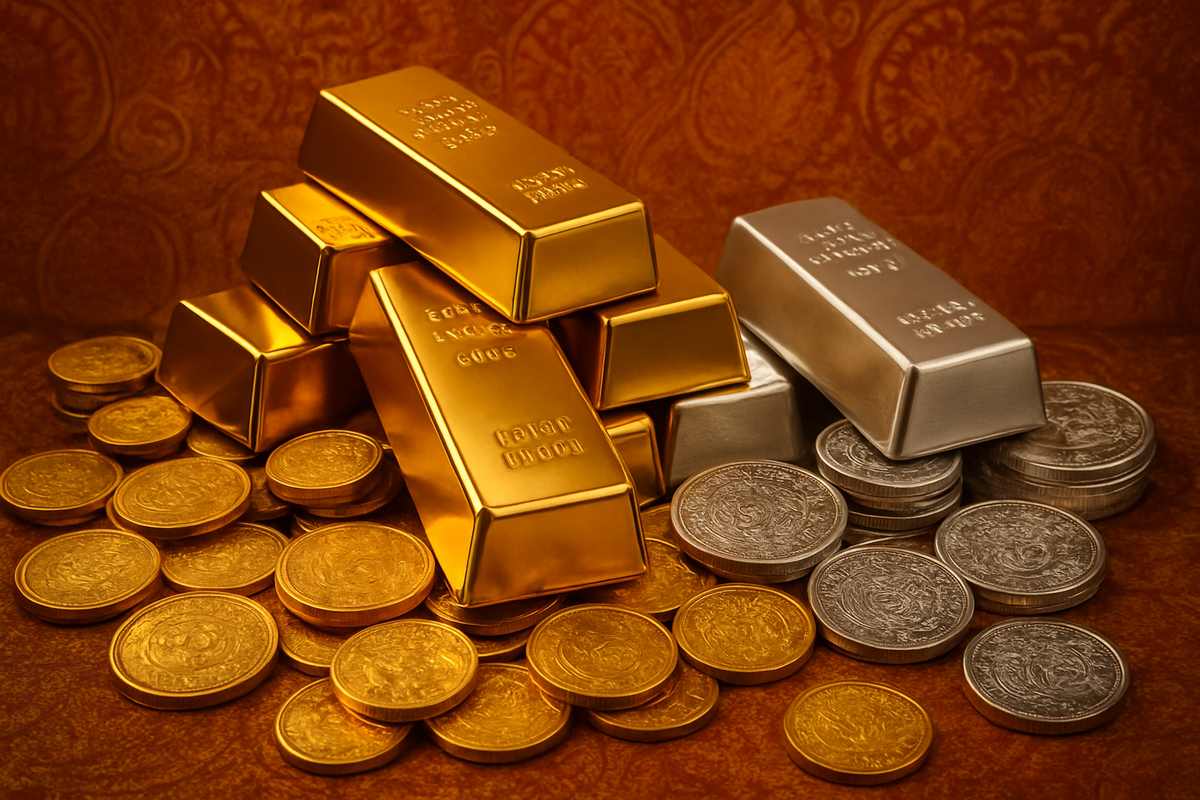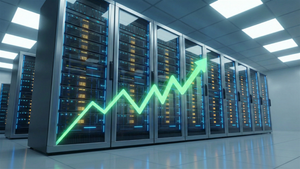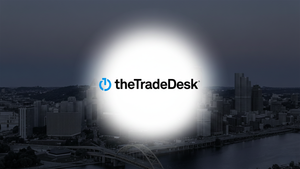
The Indian precious metals market is currently witnessing an extraordinary surge, with gold and silver prices reaching unprecedented highs on Wednesday, November 12, 2025. Gold (XAU) has seen a sharp increase of ₹2,000, pushing its price to a staggering ₹1,27,900 per 10 grams for 24K purity. Not to be outdone, silver (XAG) has experienced an even more dramatic ascent, rocketing by ₹5,540 to hit ₹1,61,300 per kilogram. This remarkable rally has sent ripples through the Indian economy, impacting everything from consumer spending habits to broader investment strategies.
This significant upward movement is largely influenced by a confluence of global and domestic factors. Internationally, strong global trends, a weakening US dollar, and optimism surrounding the US economic outlook are propelling precious metals higher. Domestically, the ongoing festive and wedding seasons, coupled with a depreciating Indian Rupee, are further fueling demand and driving up prices. The immediate implications for the Indian market include increased volatility, a bullish long-term outlook for precious metals, and shifts in consumer purchasing behavior, as many grapple with the "fear of missing out" on these appreciating assets.
The Confluence of Global and Domestic Forces
The dramatic ascent of gold and silver prices in the Indian market on November 12, 2025, is not an isolated event but rather the culmination of several powerful economic currents. On the global stage, a firm trend in international spot gold prices, hovering around $4,100 per ounce, has provided a strong impetus. This global strength is underpinned by prevailing optimism regarding the potential reopening of the US government, which promises the release of crucial economic data essential for the Federal Reserve's interest rate decisions in its upcoming December meeting. Simultaneously, a weakening international dollar index is prompting investors worldwide to pivot towards gold as a more stable store of value, further bolstered by perceptions of stability in US interest rates.
Domestically, India's unique market dynamics amplify these global movements. The nation's insatiable demand for precious metals, particularly during the ongoing festive and wedding seasons, provides a robust base for price appreciation. This cultural affinity, viewing gold and silver as both auspicious and a reliable investment, ensures a constant flow of buyers. Compounding this is a depreciating Indian Rupee (INR) against the US Dollar. As India heavily relies on imports for its gold supply, a weaker Rupee translates directly into higher landed costs for bullion, making it more expensive for local buyers. Furthermore, silver is experiencing a dual boost from safe-haven demand and robust industrial uptake, particularly from burgeoning sectors like solar energy and electronics.
Key stakeholders in this bustling market include millions of Indian consumers, the vast network of jewelers and retailers like Tanishq (NSE: TITAN), Malabar Gold & Diamonds, and Joyalukkas, as well as major importers and bullion dealers such as MMTC-PAMP and Augmont. Banks facilitate transactions and offer gold-backed products, while regulatory bodies like the Reserve Bank of India (RBI), the Ministry of Finance, and the Securities and Exchange Board of India (SEBI) oversee market stability and policy. Initial market reactions have seen increased volatility on commodity exchanges like the Multi Commodity Exchange (MCX), with jewelers facing the challenge of managing inventory amid fluctuating demand. Consumers, despite the higher prices, are exhibiting a "fear of missing out," eager to secure assets perceived as hedges against inflation and currency depreciation, often adapting by opting for lighter jewelry or exchanging old gold.
Corporate Fortunes: Winners and Losers in the Precious Metals Rally
The dramatic surge in gold and silver prices on November 12, 2025, is creating a distinct bifurcation in the fortunes of Indian public companies. While some sectors are poised for significant gains, others face considerable headwinds, necessitating strategic adaptations.
Among the clear beneficiaries are Gold Loan Non-Banking Financial Companies (NBFCs). Firms like Muthoot Finance Ltd. (NSE: MUTHOOTFIN) and Manappuram Finance Ltd. (NSE: MANAPPURAM) stand to gain substantially. The increased value of gold collateral directly enhances their assets under management (AUM), allowing them to offer larger loan amounts and boost disbursements. This not only bolsters their net interest income but also reduces lending risk, potentially leading to improved profitability and stronger stock performance. Their established market position in India's gold loan segment is further solidified by such price surges.
Conversely, Jewelry Retailers are bracing for significant challenges. Major players such as Titan Company Ltd. (NSE: TITAN), which owns popular brands like Tanishq and CaratLane, along with Kalyan Jewellers India Ltd. (NSE: KALYANKJIL) and PC Jeweller Ltd. (NSE: PCJEWELLER), will likely face reduced sales volumes as high prices deter discretionary purchases. Consumers may opt for lighter designs, lower-carat gold, or postpone purchases, especially during crucial festive and wedding seasons. Inventory management becomes a complex task amidst volatile prices, and the reliance on Gold Metal Loans (GMLs) could see increased repayment costs, squeezing profit margins despite potentially higher revenue values.
Furthermore, industries heavily reliant on silver as an industrial input face a squeeze. Electronics and Semiconductor Manufacturers, including companies like ABB India Ltd. (NSE: ABB), RMC Switchgear Ltd. (NSE: RMCSW), and those in the burgeoning solar and electric vehicle sectors like Tata Power Solar (part of Tata Power Co. Ltd. (NSE: TATAPOWER)) and Adani Green Energy Ltd. (NSE: ADANIGREEN), will see their procurement costs soar. India imports over 80% of its silver, making these companies highly vulnerable to price hikes. Increased raw material costs will compress profit margins, potentially impacting their stock performance and market competitiveness if they cannot effectively absorb or pass on these elevated expenses.
In the bullion trading space, government-backed entities like MMTC Ltd. (NSE: MMTC) and other large private bullion dealers are likely to see increased revenue in value terms due to the higher worth of traded precious metals. Strong investment demand for gold and silver bars and coins, driven by their safe-haven appeal, could boost sales volumes and profitability. Similarly, domestic mining companies like Deccan Gold Mines Ltd. (BSE: 512068) for gold and Hindustan Zinc Ltd. (NSE: HINDZINC) for silver will benefit from higher revenue per unit extracted, leading to substantial margin expansion and potentially higher stock valuations, especially as Hindustan Zinc aims to increase its silver production to capitalize on the elevated prices.
Wider Implications: A Shifting Landscape for the Indian Economy
The monumental surge in gold and silver prices on November 12, 2025, extends far beyond the immediate market, signaling profound shifts in broader industry trends and casting wide ripple effects across the Indian economy. This event aligns with a global trend of appreciating precious metals, with international spot gold prices soaring beyond $4,000 per ounce and silver exhibiting a remarkable rally, driven by persistent global economic uncertainties, geopolitical tensions, and inflationary pressures. Central banks worldwide, including the Reserve Bank of India (RBI), have been significant purchasers of gold, diversifying reserves and providing a strong floor for prices.
The ripple effects on the broader Indian economy are multifaceted. As one of the world's largest importers and consumers of precious metals, India faces an exacerbated trade deficit and Current Account Deficit (CAD) due to the increased import bill. This puts further depreciation pressure on the Indian Rupee. Rising precious metal prices can also fuel inflation expectations, potentially influencing the RBI's monetary policy decisions. Consumer behavior, deeply rooted in cultural significance, will continue to adapt; while some may postpone purchases, others holding substantial gold may experience a "wealth effect" as their assets appreciate. The stock market may see shifts, with some investors moving from equities to precious metals as safe havens, and increased interest in gold and silver ETFs.
For competitors and partners, the landscape is also evolving. Indian jewelers and manufacturers face higher production costs, impacting profitability and competitiveness, potentially driving them to promote "old gold exchange" schemes. Industries reliant on silver, such as electronics, semiconductors, and green energy (e.g., solar panels, electric vehicles), will contend with inflated input costs, which could lead to higher manufacturing costs or a push for alternative materials. Conversely, domestic silver producers like Hindustan Zinc Ltd. (NSE: HINDZINC) may ramp up production to capitalize on the elevated prices.
Regulatory and policy implications are significant. The Indian government and the RBI have historically used import duties and restrictions to manage gold imports and control the trade deficit. Recent stricter rules, classifying high-purity gold and silver as "Restricted" and channeling imports through nominated agencies or the India International Bullion Exchange (IIBX), may see further tightening or adjustments to duties. The RBI will closely monitor the impact on inflation and the Rupee, potentially adjusting monetary policy. There's also a renewed focus on schemes to mobilize idle household gold and calls for a comprehensive, long-term gold policy that supports localization.
Historically, such surges in precious metal prices have often coincided with periods of global instability. The 1970s oil crisis, the 2008 global financial crisis, and the 2020 COVID-19 pandemic all saw significant increases in gold prices as investors sought safe-haven assets. The current scenario, however, is unique due to the unprecedented scale of central bank buying, the rapid digitization of investment, and the growing industrial demand for silver in new technologies, adding layers of complexity to market dynamics not seen in previous cycles.
What Comes Next: Navigating the Future of Precious Metals
The unprecedented surge in gold and silver prices on November 12, 2025, sets the stage for a dynamic and evolving future for the Indian precious metals market and the broader economy. Both short-term reactions and long-term structural shifts are anticipated, demanding strategic pivots from all market participants.
In the short term, while the surge indicates strong bullish sentiment, initial profit-taking and increased volatility are likely. Gold prices might experience temporary corrections, though analysts generally anticipate a continued upward trajectory, with gold potentially rising towards ₹126,000 per 10 grams and silver towards ₹156,500 per kg if key support levels hold. This environment will likely fuel investment demand, driven by a "fear of missing out" (FOMO) among investors seeking safe-haven assets amidst global uncertainties and inflation. Conversely, high prices are expected to temper discretionary jewelry demand, leading consumers to postpone purchases, opt for lighter designs, or increasingly sell old gold (scrap) to capitalize on elevated values.
Looking further ahead, the long-term outlook for Indian gold and silver markets remains largely bullish. The enduring safe-haven appeal of precious metals, coupled with persistent global economic uncertainties and geopolitical tensions, will continue to underpin demand. Silver, in particular, benefits from its dual role as a precious metal and an industrial commodity, with burgeoning demand from green energy technologies like solar panels and electric vehicles. Experts project silver prices could reach $60 an ounce in the upcoming year, and domestic prices at ₹2.4 lakh per kg by 2026. Gold, too, is predicted to reach between ₹1,40,000 and ₹2,25,000 per 10 grams by 2030, supported by sustained central bank buying, cultural significance, and investment diversification strategies. The Reserve Bank of India (RBI) has significantly increased its gold reserves, bolstering national currency stability.
Market participants will need to adapt strategically. Jewelers, for instance, may offer "price protection" schemes to build trust and maintain sales, and pivot towards lighter, lower-carat jewelry offerings. Efficient inventory management and robust old gold exchange programs will be crucial. Investors are likely to increasingly diversify into Gold and Silver Exchange Traded Funds (ETFs) and digital gold, which offer liquidity and ease of access without physical ownership complexities. Policymakers, including the Indian government and the RBI, face calls for a comprehensive national gold policy to manage imports, encourage domestic monetization, and potentially adjust import duties to balance trade deficits and support the gems and jewelry sector.
Opportunities abound in the growth of digital gold and ETFs, a robust recycling market for old gold, and the surging industrial demand for silver driven by India's green energy revolution. However, challenges persist, including affordability issues for traditional jewelry, the exacerbation of India's Current Account Deficit due to high import bills, and inventory risks for jewelers amidst price volatility. The potential for increased smuggling due to high duties also remains a concern. Ultimately, scenarios range from a continued bull run, driven by ongoing global tensions and inflation, to price consolidation with moderate growth if global conditions stabilize. A significant correction, though less probable, could occur with rapid global economic recovery and sharp interest rate hikes.
MarketMinute Wrap-up: Navigating the Golden Era
The surge in Indian gold and silver prices on November 12, 2025, marks a pivotal moment, underscoring the enduring significance of precious metals in both the global and domestic financial landscapes. Key takeaways highlight a market driven by a potent mix of global safe-haven demand, industrial silver applications, central bank buying, and India's unique cultural and festive consumption patterns, all amplified by a depreciating Rupee. This confluence has propelled prices to unprecedented levels, creating both opportunities and challenges across various sectors.
Moving forward, the market is poised for continued bullish sentiment, though interspersed with periods of volatility. The long-term trajectory for both gold and silver appears robust, supported by structural factors such as persistent geopolitical instability, inflationary pressures, and the burgeoning demand for silver in green technologies. This suggests that precious metals are cementing their role as essential components of diversified investment portfolios, moving beyond mere speculative assets to fundamental hedges against economic uncertainty.
For investors, the coming months demand a strategic and disciplined approach. Maintaining a strategic allocation to gold as a hedge (typically 5-10% of a portfolio) and considering silver as a smaller, actively managed "satellite holding" (1-3%) is advisable. Employing Systematic Investment Plans (SIPs) to average out entry points and avoiding attempts to time the market are crucial in this volatile environment. Furthermore, prioritizing easily tradable instruments like Gold ETFs or sovereign gold bonds over physical jewelry for investment purposes is recommended due to lower transaction costs.
Investors should diligently monitor global macroeconomic signals, including US Federal Reserve monetary policy, the strength of the US dollar, inflation data, and evolving geopolitical risks. Buying on dips could present favorable opportunities in a generally bullish market. Ultimately, a long-term perspective will be key to realizing the full benefits of precious metal investments. As the global economic landscape continues to evolve, gold and silver are set to maintain their critical roles, offering both a store of value and strategic industrial utility.
This content is intended for informational purposes only and is not financial advice





